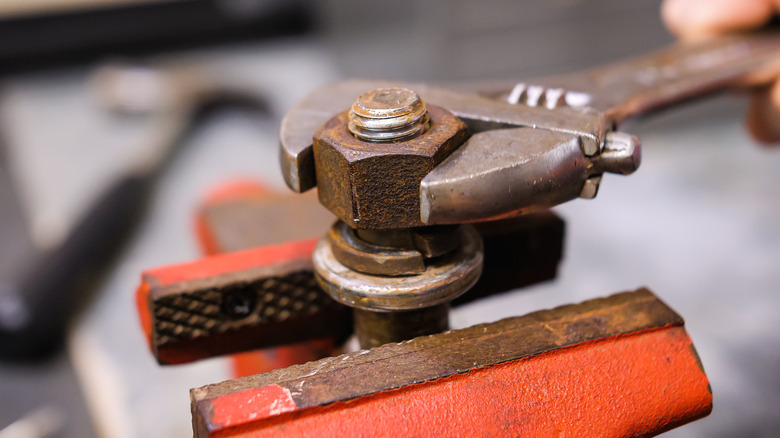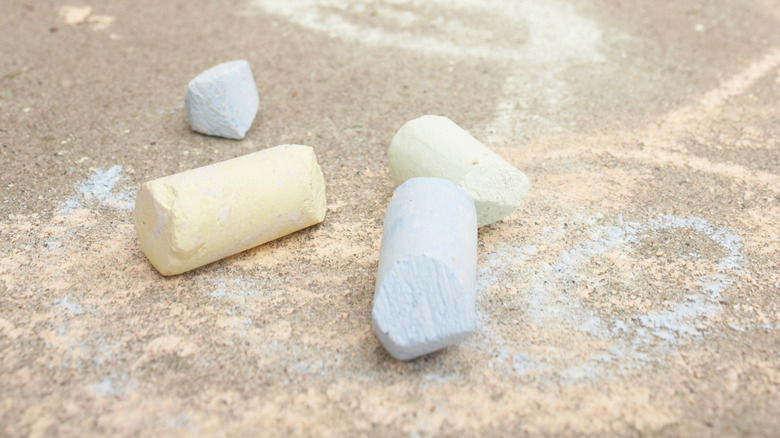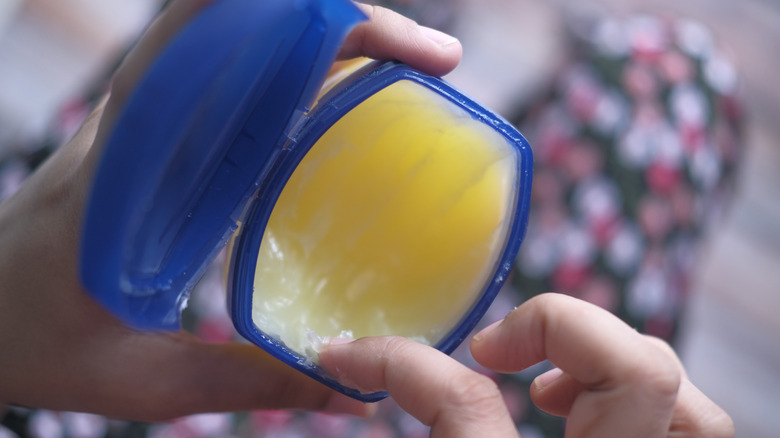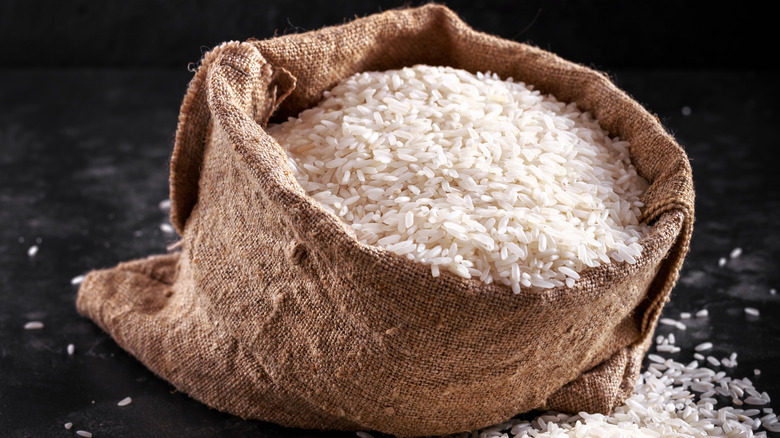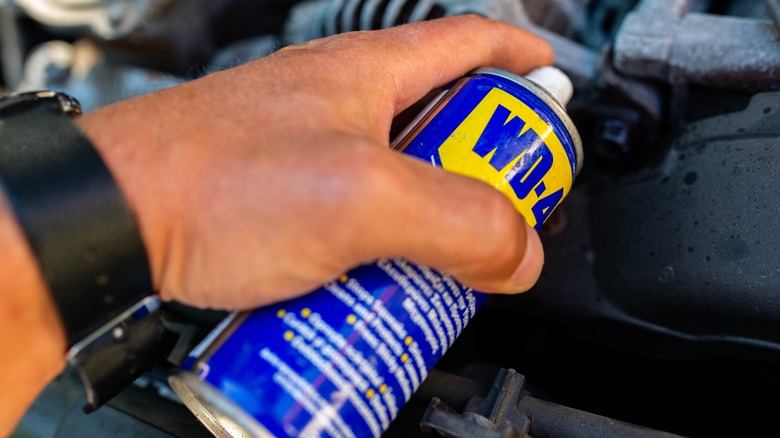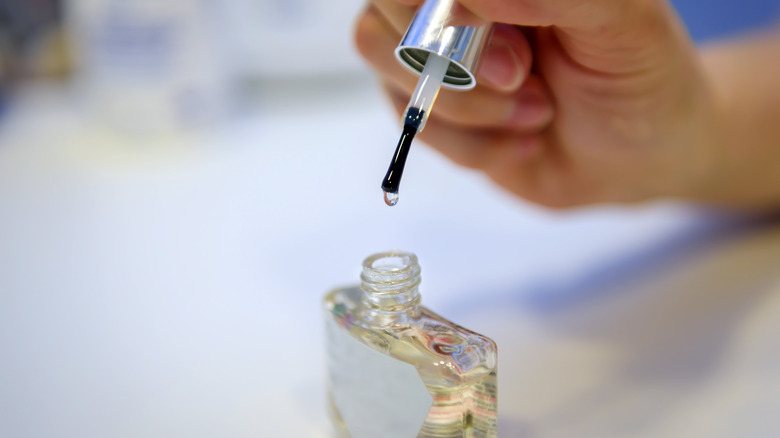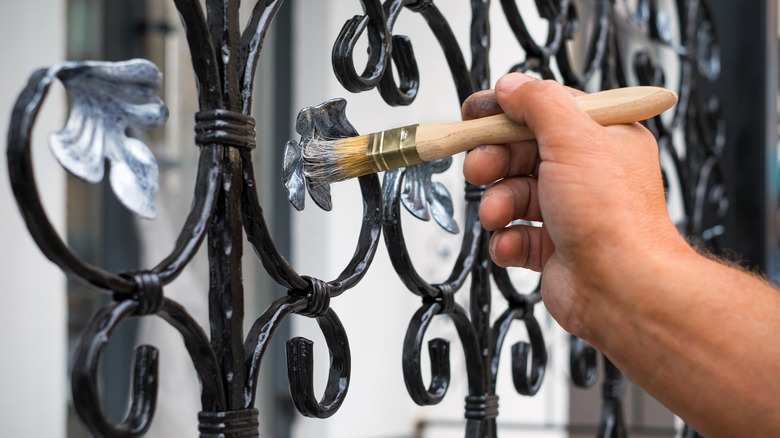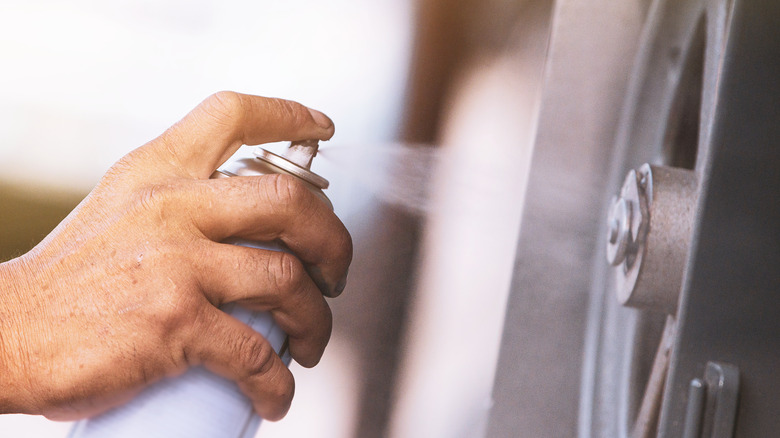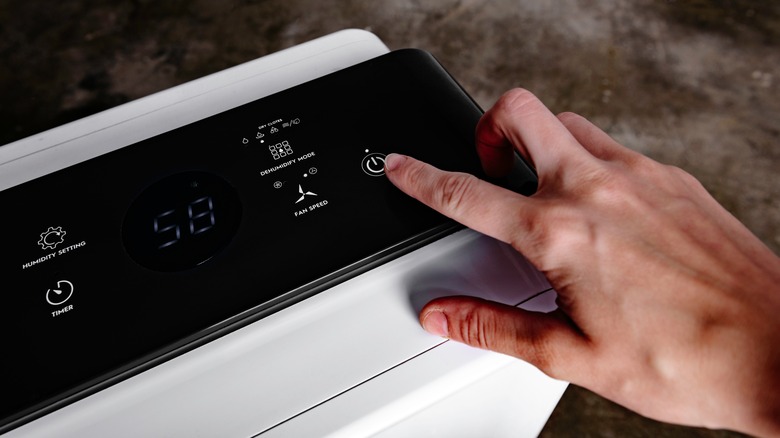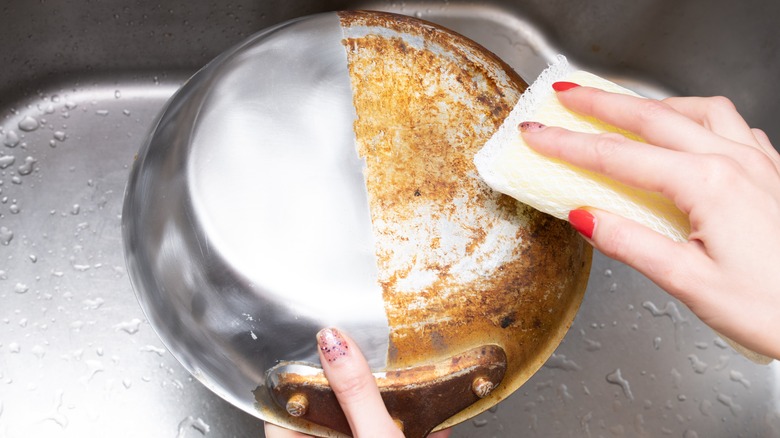Genius Tricks To Prevent Metal From Rusting
Have you ever found that your favorite tools or gadgets look too rusty for comfort? We get it — the struggle against rust is real! One thing for certain is that it can appear everywhere, from your taps indoors to your locks outdoors. Rust is the result of a natural process called oxidation. This occurs when metals, like iron and steel, react with oxygen and moisture in their surroundings. It's like a relentless tag team that gradually eats away at the surface of your beloved metal possessions.
Instead of waiting until it catches up to you, forcing you to make a big effort to try to get rid of it, why not save yourself some stress? You can do this by preventing rust in the first place. All you have to do is stop water from reacting with oxygen. But that's easier said than done. So, instead of beating yourself up over elements you can't control, try these genius tricks to keep rust formation at bay.
Chalk keeps the rust away
Chalk can help prevent rusting to some extent. The science behind this anti-rust hack on your tools is creating an environment where moisture is absorbed. Everyone from HVAC specialists to carpenters swear by this and many of them put a few sticks into their toolboxes to keep the contents dry. Sidewalk chalk or basic chalkboard chalk both work well, and this happens to be a great way to use up broken pieces. Just swap the sticks out for new ones about every three months.
You can also break your chalk up into a powder in a plastic storage bag. Make sure the bag is completely sealed, and break up the sticks with your hands. Then, roll over it with a rolling pin or jar to create a finer substance. Place any metal items you'd like to protect in the storage bags with the chalk powder. It will absorb any excess moisture and keep them nice and dry. This trick is particularly useful for smaller items like jewelry, screws, or bolts.
Petroleum jelly is a slick sealant
Petroleum jelly making this list might not come as a surprise to some of you. However, it can be your trusty sidekick in preventing rust. Many mechanics rely on this medicine cabinet staple to keep their tools pristine. The theory is that the jelly forms a barrier that prevents moisture from reaching the metal, therefore protecting it from oxidation.
To use petroleum jelly to prevent rust, first ensure that the metal surface is clean. Use a mild cleaning agent or a damp cloth to remove any existing dirt or debris. Then with a clean, soft cloth or a sponge, apply a thin, even layer of Vaseline to your metal surface. Pay extra attention to vulnerable or exposed areas where moisture might accumulate like joints, crevices, and edges. Over time, the coating may wear off or be exposed to environmental elements and should be periodically reapplied, especially if the metal is regularly exposed to moisture or harsh conditions.
Uncooked rice has more than one use
Ever come across hacks advising people to throw wet phones into a bag of uncooked rice for 24 hours? If yes, then you'll know where we're going with this. Uncooked rice causes a phenomenon known as hygroscopy. It can attract and hold water molecules from its environment via absorption. This is why it's a handy hack when you want to prevent rusting. Many hobbyists use this trick to reduce humidity in places like their tool chests, tackle boxes, and even gun safes.
First, place a generous amount of uncooked rice in a dish or a bag made of a porous material. Over time, the grains will absorb moisture from the air, causing them to swell. Once they do this, then they should be replaced. Keep in mind that only uncooked rice can keep your tools rust-free. Cooked grains have a higher water content and are not effective.
WD-40 can form a protective layer
Are you tired of home hacks and would prefer a store-bought option to prevent your metal from rusting? WD-40 is a widely known and popular multi-purpose, cleaner that many people use to prevent rust. It's better for short-term use, but as the WD in the name stands for water displacement, it provides a thin barrier to keep moisture away.
First, make sure the metal is clean by wiping off any dirt or debris. Shake the can well, then hold it about 6 to 8 inches away from the surface. Then, evenly spray the metal, covering it with a light coat. Let it sit for a few minutes so it can seep into all the tiny spaces on the surface. Finally, use a clean cloth to wipe away any extra liquid. If your metal is outside or is handled a lot, you might need to spray it more frequently to keep it protected.
Nail polish isn't just a beauty staple
Clear nail polish is a beauty essential that does more than just protect your nails. According to car and bike enthusiasts, transparent nail polish can work in a pinch to seal paint chips and prevent them from rusting. While the damage will eventually have to be properly treated and repainted, the polish can slow the formation of rust and prevent it from spreading to nearby areas.
First, ensure the metal is completely dry before applying the nail polish. Use a clean brush or the bottle's built-in one and apply a thin, even layer over top and just outside the damaged area. Then, allow the nail polish to dry completely. The key to the most seamless look is to match the nail polish's sheen to that of the surface. For example, high gloss paints can be protected with glossy nail polish. However, if your paint has a shine-free finish, reach for a bottle of matte polish for a less obvious repair.
Painting the metal forms a barrier
Metal surfaces often have microscopic pores, imperfections, or areas where the metal is exposed. Paint seals these openings, creating a smooth and impermeable layer. This shields the metal from environmental elements that can cause corrosion. The key is to select an oil-based formula which Certa-Pro explains can not only prevent new rust but can also stop existing rust from spreading.
When it comes to the painting process, the first step is priming. Apply a metal primer to the clean and dry surface as a base coat. This enhances the paint's adhesion and provides additional rust protection. Then, allow the primer to dry completely before moving to the next step. Since you're using oil-based paint, use tape to cover any areas you don't want to be permanently marked. You'll also want to use a drop cloth or newspaper to protect surrounding surfaces from splatter. Apply the first coat and allow it to dry completely before applying additional ones. In the future, perform touch-ups as needed to address any areas where the paint chips or wears away.
Galvanizing spray can stop rust
Galvanizing is the process of coating iron or steel in a layer of zinc to prevent it from corrosion. Zinc is ideal because it forms a protective oxide layer that helps resist corrosion. Now, there are lots of options for applying this layer at home. For example, Rust-Oleum's Cold Galvanizing Compound Spray from Home Depot is a simple way to protect metal items for around $10.
Simply follow the can's instructions to apply an even coating, ensuring you cover the entire surface. As the spray sticks to the metal and dries, it forms a protective layer. This method is great for things like outdoor structures like handrails, fences, and locks. The best part about this trick is the longevity of the treatment. It's meant to be permanent and when the protective layer gets dinged or scratched, the zinc oxide uses its self-healing properties to repair the damage.
Proper ventilation is a helpful practice
Garage experts explain that good ventilation can indirectly help prevent rusting. Moisture levels and oxygen are the two core factors responsible for rust formation. Proper ventilation helps to reduce humidity in enclosed and tight spaces and ensures a continuous flow of air. This can help dilute the concentration of moisture around your metal surfaces, eliminating one of the rust-inducing elements.
Consider using dehumidifiers in spaces where you store metal tools or machines. A portable, rechargeable fan can also be a simple way to promote air movement. This is especially helpful when you're working in your garage on a hot and humid day. You should also arrange any metal items in ways that allow good air circulation. Avoid stacking objects tightly together as this can trap moisture between them. Also, maintain a consistent temperature in your garage and storage areas as fluctuations can lead to condensation, promoting rust.
Cleaning can make a world of difference
Many problems could be solved just by taking the time to clean certain things. This just happens to be one of those cases. Proper maintenance helps prevent surfaces from getting rusty by removing build-up. Many metal experts tout cleaning as one of the best and first lines of defense against rust forming.
This is as simple as using a bit of soap and water with a soft brush or cloth to wipe away dirt and dust. Make sure to clean all the nooks and crannies where debris can hide. Then, thoroughly rinse the metal to remove any leftover soap. The most important part is making sure the metal is completely dry by wiping it down with a dry cloth. You can also use a fan or hair dryer to help it dry faster. After cleaning is the ideal time to think about putting on a protective coat like galvanizing spray or paint for fuller protection from rust.
